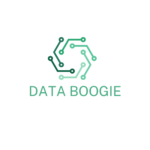Types of Big Data
- Understanding Big Data Types: Familiarity with structured, semi-structured, and unstructured data is crucial for effective data management and analytics.
- Structured Data: This organized type, found in databases, enables efficient reporting and querying, supporting data-driven decision-making.
- Semi-Structured Data: This data type contains elements of both structured and unstructured data, offering flexibility while preserving some organization, making it easier to process.
- Unstructured Data: Representing a significant portion of big data, it includes complex formats like text and multimedia, requiring advanced analytics tools for insight extraction.
- Sources of Big Data: Key contributors include social media interactions, IoT devices, and transactional data, providing valuable insights into consumer behavior and operational efficiencies.
- Challenges of Big Data Management: Organizations face hurdles related to data volume, variety, and velocity, which affect storage, integration, and real-time analysis capabilities.
Big data is reshaping industries and transforming the way organizations operate. With the exponential growth of data generated every day, understanding the various types of big data becomes essential for businesses looking to leverage this valuable resource. From structured data found in databases to unstructured data from social media, each type offers unique insights and opportunities.
In this fast-paced digital landscape, companies must navigate different categories of big data to stay competitive. By exploring the nuances of structured, semi-structured, and unstructured data, organizations can harness the power of analytics to drive decision-making and innovation. This article delves into the types of big data, providing clarity on how each type can be utilized effectively in today’s data-driven world.
Overview of Big Data
 Big data encompasses vast volumes of data generated at high velocity from various sources. This data includes user interactions, social media activity, transaction records, and sensor data. The analysis of big data yields valuable insights that inform decision-making and strategic planning within organizations.
Big data encompasses vast volumes of data generated at high velocity from various sources. This data includes user interactions, social media activity, transaction records, and sensor data. The analysis of big data yields valuable insights that inform decision-making and strategic planning within organizations.
Data types, categorized into structured, semi-structured, and unstructured categories, shape how big data is utilized.
- Structured Data: This type consists of organized information in fixed formats, often found in databases and spreadsheets. Examples include customer records and inventory levels. Structured data enables efficient querying and reporting.
- Semi-Structured Data: This type contains elements that do not conform to a strict structure but still maintain some organizational properties. Examples encompass XML files and JSON documents. Semi-structured data offers flexibility while preserving certain structural aspects, making it easier to process than unstructured data.
- Unstructured Data: This type represents the bulk of data generated and lacks a predefined format. Examples include emails, videos, and social media posts. Unstructured data presents challenges for analysis due to its diverse formats but holds significant insights when processed with advanced analytical tools.
Understanding these data types facilitates better strategies for collecting, storing, and analyzing data. Leveraging the insights gained from big data allows businesses to enhance operational efficiency, improve customer engagement, and foster innovation.
Types of Big Data
Understanding the types of big data facilitates better data management and analytics. Three primary categories exist: structured data, unstructured data, and semi-structured data. Each offers distinct characteristics and applications.
Structured Data
Structured data refers to highly organized information typically stored in relational databases. This data type includes numerical values, dates, and strings, making it easily searchable and analyzable. Standard formats, such as tables with rows and columns, define structured data, enabling efficient querying using SQL. Examples include customer records, transaction histories, and inventory lists. Businesses often rely on structured data for generating reports and making data-driven decisions.
Unstructured Data
Unstructured data encompasses information that lacks a predefined format or structure. This data type is more complex and includes text, images, audio, and video files. Representing approximately 80-90% of all data generated, unstructured data presents significant challenges for traditional analysis methods. Advanced tools, such as natural language processing and machine learning algorithms, are necessary for extracting valuable insights from unstructured data. Examples include social media posts, emails, and multimedia content.
Semi-structured Data
Semi-structured data occupies the middle ground between structured and unstructured data. While it lacks a fixed schema, it contains organizational properties that make it easier to analyze than unstructured data. Formats like JSON, XML, and CSV facilitate the representation of semi-structured data. This data type allows flexibility in handling diverse information types while still maintaining some degree of structure. Examples include online surveys, log files, and metadata, which organizations can leverage for in-depth analysis.
Sources of Big Data
Various sources contribute to the accumulation of big data, each providing distinct types of information that can be leveraged for insights and decision-making.
Social Media
Social media platforms generate vast amounts of unstructured data daily. Posts, comments, likes, shares, and multimedia content create rich datasets that reflect user behavior and preferences. Popular platforms include Facebook, Twitter, Instagram, and LinkedIn. This data offers insights into consumer sentiment, brand engagement, and market trends, enabling companies to tailor marketing strategies effectively.
IoT Devices
IoT devices produce immense volumes of data through interconnected sensors and smart appliances. Wearables, smart home devices, industrial machinery, and connected vehicles continuously collect and transmit data regarding usage patterns and environmental conditions. Such data facilitates real-time monitoring, predictive maintenance, and enhanced operational efficiency across various sectors, including healthcare, manufacturing, and transportation.
Transactional Data
Transactional data stems from business transactions and includes details related to purchases, sales, and customer interactions. Data points consist of purchase amounts, payment methods, timestamps, and customer IDs. Retailers, banks, and e-commerce platforms are primary sources of this structured data. Analyzing transactional data enables organizations to identify buying patterns, optimize inventory management, and enhance customer experience through personalized offerings.
Challenges of Managing Big Data
Managing big data presents several challenges that organizations must address to maximize its potential. The significant volume, variety, and velocity of data create complexities in storage, processing, and analysis.
Data Volume
Data volume refers to the massive amount of data generated every day. Organizations face storage limitations, requiring scalable solutions that can handle terabytes or even petabytes of data. For instance, a large retailer accumulates vast customer transaction data, necessitating cloud storage or data lakes for effective management. The need for advanced hardware and software solutions increases operational costs while complicating data retrieval and processing.
Data Variety
Data variety encompasses the diverse formats of data, including structured, semi-structured, and unstructured forms. Organizations encounter difficulties in integrating these varying data types, which often reside in disparate systems. For example, a healthcare provider may need to analyze patient records (structured), clinical notes (semi-structured), and imaging data (unstructured), requiring specialized tools to ensure coherent analysis. Ensuring data quality while navigating this diversity can impede decision-making processes.
integrating these varying data types, which often reside in disparate systems. For example, a healthcare provider may need to analyze patient records (structured), clinical notes (semi-structured), and imaging data (unstructured), requiring specialized tools to ensure coherent analysis. Ensuring data quality while navigating this diversity can impede decision-making processes.
Data Velocity
Data velocity involves the speed at which data is generated and processed. Rapid data inflow from sources such as social media, IoT devices, and transactional systems poses challenges in real-time analysis. For instance, financial institutions must process large volumes of transactions instantly to detect fraudulent activities. Delays in data processing can hinder insights and operational responsiveness, necessitating technologies like stream processing and real-time analytics to manage the influx effectively.
Understanding the different types of big data is crucial for organizations aiming to harness its potential. Each category—structured, semi-structured, and unstructured—offers unique insights and presents distinct challenges. By effectively managing and analyzing these data types, businesses can drive innovation and improve decision-making.
As industries continue to evolve, leveraging big data will become increasingly important for maintaining a competitive edge. Organizations that embrace advanced analytical tools and scalable solutions will be better equipped to navigate the complexities of data management. Ultimately, the ability to transform data into actionable insights will empower businesses to enhance operational efficiency and engage customers more effectively.



